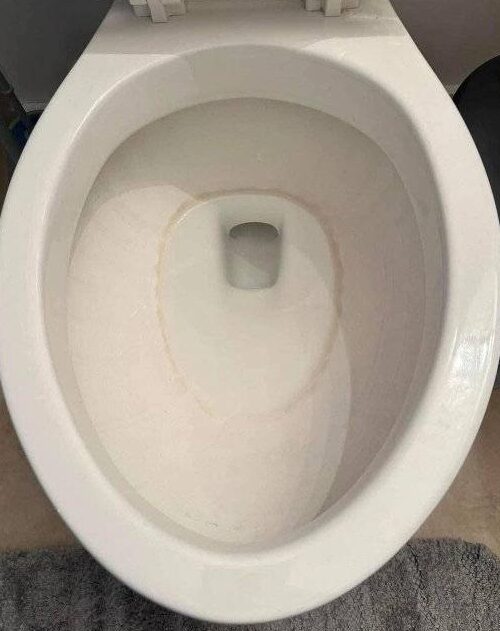Introduction
Hard water stains can leave stubborn rings and mineral buildup inside toilet bowls, making them look dirty even when cleaned regularly. Using just one natural, affordable product—white vinegar—you can dissolve these deposits effectively without harsh chemicals or complex routines.
Origin and Cultural Significance
Vinegar has been used as a cleaning agent for centuries, dating back to ancient civilizations that valued its disinfecting and mineral-dissolving properties. In modern households, especially in regions with hard water, vinegar has become a trusted, eco-friendly alternative to commercial cleaners. Its popularity reflects a growing global shift toward safe, minimalist, and sustainable cleaning practices.
Ingredients Quantity
Only one product is needed:
- White distilled vinegar: 2–4 cups (depending on stain severity)
Optional Additions
While vinegar alone works well, these additions can enhance results if desired:
- 1–2 tbsp baking soda (for fizz and deodorizing)
- Lemon juice (to boost acidity and scent)
- A few drops of essential oil (for fragrance)
- Pumice stone (only if stains are extremely hardened)
Tips for Success
- Push toilet water below the stain line before pouring vinegar for maximum contact.
- Let the vinegar sit at least 2 hours—overnight for tough stains.
- Warm (not boiling) vinegar can dissolve harder mineral deposits faster.
- Avoid mixing vinegar with bleach or chemical cleaners—it can release harmful fumes.
- Use a toilet brush after soaking to remove softened residue.
Instructions
- Expose the stain area: Use a plunger or toilet brush to push water below the stain line.
- Pour vinegar: Add 2–4 cups of white vinegar directly into the bowl, targeting the stained area.
- Let it soak: Allow it to sit for 2 hours or overnight for stubborn rings.
- Brush (if needed): Swish with a toilet brush to remove loosened buildup.
- Flush: Clear the bowl and inspect the results.
Description
This method uses the natural acidity of vinegar to break down calcium, lime, rust, and other mineral deposits that cling to toilet surfaces. The process is simple, odor-safe, and eliminates the need for synthetic cleaners or heavy scrubbing. The bowl is left visibly cleaner, whiter, and fresher.
Nutritional Information
(N/A for this topic, but here’s a functional equivalent in cleaning terms.)
Safety & Environmental Profile:
- Non-toxic
- Biodegradable
- Septic-safe
- No synthetic dyes or fragrances
- Safe around pets and children when used properly
Conclusion
Removing hard water stains doesn’t require chemical-laden cleaners or expensive products. With only white vinegar, you can restore the cleanliness of your toilet bowl using a natural, budget-friendly method that works with minimal effort.
Recommendation
- For prevention, repeat the vinegar soak once a month.
- Keep a spray bottle of diluted vinegar handy for routine touch-ups.
- Use warmer vinegar for thick or long-standing mineral rings.
Embracing Healthful Indulgence
Choosing vinegar over harsh commercial cleaners supports a healthier home environment. It reduces chemical exposure, protects septic systems, and aligns with eco-conscious living—all while saving money and effort. This small switch makes everyday cleaning safer and more sustainable without sacrificing results.
